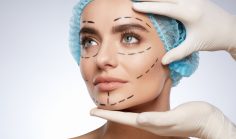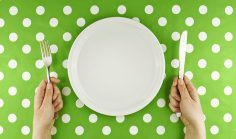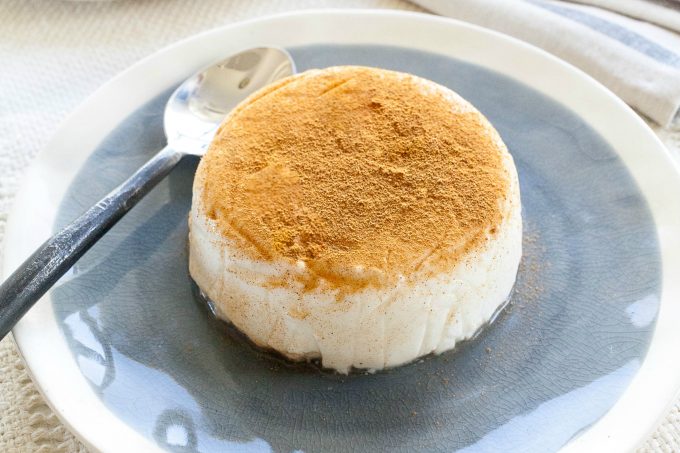Overactive Bladder (OAB), also called urge incontinence, spastic bladder, and irritable bladder syndrome, is a condition that causes a sudden, urgent desire to pass urine even if the bladder is not full. This urge to urinate, which is difficult to suppress, can lead to the involuntary loss of urine (incontinence); however, OAB is not the same condition as stress incontinence. In OAB, episodes of urine leakage, or incontinence, are always accompanied by the urge to urinate, as compared to stress incontinence in which episodes of incontinence are unanticipated and brought about by actions such as coughing, laughing, or jumping. According to the Urology Care Foundation, approximately 33 million Americans have overactive bladder.
Overactive Bladder (OAB)

What Is Overactive Bladder (OAB)
What Causes Overactive Bladder (OAB)
OAB is characterized by spasms of urinary muscles that lead to the sudden urge to urinate. Often, OAB is idiopathic, meaning that the specific cause of the involuntary contractions of the muscles of the bladder that lead to the urge to urinate is unknown. However, the following factors may contribute to OAB:
- Aging, especially for postmenopausal women. Decreased estrogen levels in post-menopausal women can contribute to incontinence and urgency.
- Weakened pelvic muscles. Pregnancy and childbirth can put a large amount of stress on the pelvic muscles that support regular urinary control. Weakened pelvic muscles make an individual more susceptible to bladder leakage and frequent urination conditions.
- Prostate conditions. Enlarged prostates can put pressure on the bladder and contribute to frequent urges to urinate.
- Nerve Damage. Since OAB can be caused by a miscommunication between the nerves surrounding the bladder and the brain, damage to the nervous system can put individuals at a higher risk for developing the condition. Nerve damage can be caused by:
- Neurological disorders such as Parkinson’s and multiple sclerosis
- Diabetes
- Stroke
- Urinary tract infections. Bacteria that cause urinary tract infections can inflame the nerves that signal the brain for urination and can cause unanticipated bladder contractions.
- Constipation. A full colon can put more pressure on the bladder and may interfere with its regular function.
- Consuming large amounts of caffeine or alcohol. Caffeine and alcohol are diuretics, meaning they cause the body to produce more urine than it normally would. This, in combination with their potential ability to dull the senses, can cause the bladder to overfill, causing urgency or incontinence.
Risk Factors For Overactive Bladder (OAB)
While the exact cause of OAB is unknown, researchers have identified several risk factors associated with the condition. These include:
Age. OAB can strike at any age, but the risk increases with age. The National Association for Continence reports that one in five adults over the age of 40 has OAB.
Gender. There are conflicting reports on whether or not women are more likely to develop OAB than men. According to the National Association for Continence, 17% of women over the age of 18 are affected by overactive bladder as compared to 16% of men 18 and over. However when grouped with urinary incontinence (UI), an overlapping condition in which urine unexpectedly leaks from the bladder without the urge to urinate, the distribution of risk changes dramatically. The same report from the National Association for Continence states that women are twice as likely to suffer from OAB than men if the condition is grouped with the overlapping UI. Hormonal activity related to menstruation, pregnancy, and menopause can lead to weakened pelvic-floor muscles that increase the risk of OAB in women, however men, too, have added risk with the possibility of an enlarged prostate.
Obesity Extra pounds increase the pressure on the bladder, which may lead to involuntary contractions. Obesity may also lessen blood flow and nerve activity in the bladder, and puts individuals at a higher risk for certain OAB-connected conditions such as diabetes.
Spinal Cord Injury Impairment of the signals sent to the bladder via the spinal cord can cause involuntary contractions.
Diagnosing Overactive Bladder (OAB)
In many cases, a general physician will be able to make an OAB diagnosis.
You physician’s work-up will include the following:
- Medical history
- Physical exam, focusing on your abdomen and genitals.
Depending on the results of your examination, your doctor may order the following tests:
- Pelvic Exam (women). Pelvic exams check for pelvic and vaginal abnormalities, and can help detect weakened pelvic muscles.
- Prostate Exam (men). Prostate exams can help check for prostate abnormalities or prostate enlargement.
- Cough Stress Test. This test helps to rule out stress incontinence. Patients are asked to cough and are then checked for signs of bladder leakage.
- Focused Neurological Exam. This helps identify sensory problems or abnormal reflexes.
- Urinalysis. Urinalysis tests a urine sample for infection, traces of blood, or other abnormalities.
- Cystometry. In this test, a catheter is used to fill the bladder with saline in order to measure the pressure of the full bladder and surrounding regions.
- Uroflowmetry. In uroflowmetry, a patient urinates into a uroflowometer, which records the speed and volume of urination.
- Electromyography. This test can help identify nerve miscommunication by placing electrodes near the muscles that control the release of urine and recording electric impulse activity.
- Ultrasound. An ultrasound helps detect any physical abnormalities of your bladder and urethra by providing live images of the organs in your pelvic region.
Symptoms of Overactive Bladder (OAB)
Because OAB is so closely connected to other urinary disorders, it can be difficult to separate the symptoms of OAB from other conditions.
The main and distinguishing symptom of OAB is:
- A sudden urge to urinate that’s difficult to control and may result in urinary leakage (incontinence). This separates OAB from urinary incontinence, in which urine leakage is unanticipated, and is not accompanied by the urge to urinate.
The following symptoms are common among OAB patients, but are not exclusive to the disorder:
- Incontinence, the involuntary loss of urine.
- Frequent urination, usually eight or more times in 24 hours.
- Nocturia, waking two or more times in the night to urinate.
Prognosis
There is no cure for overactive bladder, but with proper treatment and medication, OAB can be controlled in most people. [NOTE: hyperlink ‘treatment’ and ‘medication’ to ‘alternative treatment’ and ‘medication’ sections, respectively.
Living With Overactive Bladder (OAB)
Living with an overactive bladder can be difficult. The following tips can help you manage your symptoms and live comfortably with OAB:
- Cut down on caffeine and alcohol. Caffeine and alcohol are diuretics, which can make you need to go to the bathroom more frequently.
- Increase exercise and lose weight. Excess weight can cause increased pressure on the bladder. Regular exercise will help maintain bodily strength and balance, and can help lessen some of the symptoms of OAB.
- Take your medication as prescribed. Taking above or below the recommended dose may interfere with the medication’s intended purpose.
- Practice “time voiding.” Urinate by the clock rather than by what your bladder tells you. This will help you control and recognize the amount of ‘false urges’ you experience, that is, urges when your bladder is not full. Carefully monitor your liquid intake and make sure that restrooms are available at your designated urination times.
- Wear absorbent pads, especially when you won’t be near a bathroom or during travel. Choose products specifically designed for incontinence rather than for menstruation. Incontinence pads have absorbency properties more suited to urinary leaks.
- Join a support group or on-line forum. Connecting with others with OAB may help you cope with difficult aspects of the condition. Visit the website of the National Association for Continence here for more information.
Screening
Previously, OAB was not screened for mainly because of a time-consuming diagnosis process. However, an OAB diagnostic tool has just been validated and is expected to make its way into general practices in the near future. The screening tool is an 8 line questionnaire in which patients are asked to rate the degree of severity of any urinary symptoms they may be experiencing, and has been shown to increase the efficiency of OAB diagnosis and treatment. If the results of a patient’s screening test are positive, he or she may wish to confirm the diagnosis with one or several diagnostic tests.
Prevention
The causes of overactive bladder (OAB) are associated with factors that are often unavoidable – including involuntary muscle contractions as a result of a neurological disorder or obstruction. This makes preventing the condition difficult. Therefore, OAB prevention focuses on reducing OAB symptoms by making lifestyle and dietary changes.
Medication And Treatment
Many of the available medication options for OAB have significant side effects. Unwanted complications can occur if these drugs are accidentally combined with other medications so be sure to tell your doctor and pharmacist about all the prescription and nonprescription medications and supplements you are taking.
Medication to treat OAB
Anticholinergics work to stop the urinary muscle and bladder spasms that characterize OAB by blocking nerve transmission. They are the first-choice medications for treating OAB.
Anticholinergics include:
- Festerodine (Toviaz)
- Oxybutynin (Ditropan, Gelnique, Oxytrol)
- Solifenacin (Vesicare)
- Tolterodine (Detrol)
- Trospium (Sanctura)
Because anticholinergics work by blocking nerve transmission, they are not recommended for people who already suffer from or are at a high risk for a neurological disorder such as Alzheimer’s disease. Because of this, anticholinergics are often not prescribed to elderly patients.
Other medications include:
- Botulinum toxin. Most commonly known as Botox, botulinum toxin injections work by paralyzing the bladder muscle and disabling bladder spasms that cause sudden urges to urinate. Botulinum toxin is only recommended for patients ages 18 and up who have not responded to any other OAB treatments and who are willing and able to be catheterized following treatment in the case of severe complications (i.e. bladder paralysis). Because of the high risk and high cost (between $500-$800 per injection) botulinum toxin is a less popular treatment option for OAB.
- Darifenacin. Also known as Enablex, darifenacin is a selective muscarinic M3 – receptor antagonist – meaning that it blocks acetylcholine, a neurotransmitter essential to muscle contraction, thereby lessening bladder spasms in OAB patients. Studies have shown that darifenacin has less effect on the mental functioning of its patients, making it a better candidate for treatment of OAB in elderly patients or in those at risk of neurological disorders. The most serious common side effects reported with darifenacin include dry mouth and constipation.
- Duloxetine. Commonly known as Cymbalta, duloxetine is a serotonin-norepinephrine reuptake inhibitor, meaning that it blocks the absorption of neurotransmitters serotonin and norepinephrine, which are essential to the nerve transmission process. Duloxetine is more commonly used to treat multiple sclerosis patients with OAB rather than those that just have OAB. Duloxetine is also commonly prescribed as an anti-depressant for patients without OAB. It has shown to reduce OAB symptoms, however its exact effect on bladder control is not known.
- Desmopressin. Desmopressin, also known as Stimate or Ddvap, is a more novel drug among the available OAB treatments. Typically used to prevent excess fluid loss in patients with diabetes or neurological trauma, desmopressin works in OAB patients by decreasing kidney function and urine production, lengthening the time it takes the bladder to fill and lessening the frequency of urgent urination sensations.
- Estrogen. In patients for whom OAB is a result of post-menopause estrogen deficiency, low-dose vaginal estrogen therapy can help reduce urgency and frequent urination by restoring vaginal tissue that may be damaged from the sudden drop in estrogen levels without exposing the entire body to the hormone. Vaginal estrogen treatment should not be used by women who are pregnant. Vaginal estrogen treatments come in three forms:
- Creams – Estradiol and Premarin
- Suppositories – Vagifem (Estradiol)
- Rings – Estring (Estradiol)
- Imipramine. Also known as Tofranil, imipramine is a tricyclic antidepressant (TCA) that works by inhibiting the neurotransmitters epinephrine and norepinephrine. Imipramine is not among the first line medications for OAB because the exact mechanism behind its effects is unknown, and it often takes several weeks for doctors to determine if the drug is positively affecting the patient.
- Mirabegron. Also known as Mirabetriq, mirabegron is a newly FDA-approved treatment for OAB. It works by stimulating beta-3 receptors on the surface of the detrusor, the main muscle in the wall of the bladder. This relaxes the muscle and prevents spasms that characterize OAB. Mirabegron is not recommended for individuals with liver, heart, and kidney disease or those with high blood pressure.
Always talk to your doctor before starting any new medication regimen. He or she will be able to foresee any potential risks and/or medication interactions.
Treatments for OAB
In addition to medications, there are many available treatments to help control OAB symptoms.
- These include:
- Kegel exercises. Kegel exercises are repeated contractions of the pelvic floor muscles—the same muscles that can stop a stream of urine—that can help strengthen the muscles and prevent leakage associated with OAB.
- Behavioral modification. Eliminating high-caffeine drinks and alcoholic beverages, keeping the proper diet, and making other behavioral changes can dramatically improve OAB symptoms.
- Pelvic Floor Therapy. Pelvic Floor Therapy is done with the help of a physical therapist and involves a combination of techniques aimed at restoring pelvic muscle integrity. Pelvic floor therapy may include:
- Joint and tissue mobilization, which uses gentle manipulation to repair and restore damaged pelvic tissues.
- Neuromodulation therapy, which delivers harmless electrical impulses to nerves and can change how the nerves work. This type of therapy is used only for patients whose medications or other behavioral therapies do not work or cause serious side effects.
- Bladder training, which re-trains bladder muscles to function properly by consciously suppressing frequent urges to urinate.
- Manual therapy, which involves physically applying pressure to the bladder and pelvic muscles to restore blood flow and aid muscle recovery.
- Biofeedback, in which an intra-vaginal device retrains pelvic floor muscles to contract and relax properly.
Surgery to treat OAB
Surgical options are considered when other modes of treatment have failed or have shown to have serious side effects.
These include:
- Sacral nerve stimulation. In sacral nerve stimulation therapy, a small device that constantly stimulates the sacral nerve is implanted in the buttocks. This helps to stop muscle spasms and promote healthy bladder function. A trial device is initially implanted during a 30-40 minute out-patient procedure, and if the patient reports success with it over a two week period, a final device is implanted in a 15 minute follow up procedure. The procedure is favored among surgical options for its reversibility and its relatively short insertion time, however the device needs to be replaced every 3 to 5 years due to limited battery life.
- Augmentation Cystoplasty. In this procedure, a surgeon increases the size of the bladder by adding to it a small portion of intestinal tissue. Ideally, this increases the capacity of the bladder while allowing the patient to pass urine normally, however complications can include a lack of ability to pass urine and may result in necessary catheter use.
- Bladder Removal. In the most extreme cases, the bladder needs to be removed entirely. When this occurs, doctors have to divert the urine flow. This can happen in three ways:
- Ileal Conduit Urinary Diversion, in which urine is diverted first through a portion of the small intestine and then through the abdominal wall to an external pouch. This is a relatively simple procedure, but the external bag of urine can produce an unpleasant odor and cause body image issues in the patient. Ileal Conduit Urinary Diversion also puts patients at a higher risk for urine backflow into the kidneys, heightening risk for infection.
- Indiana Pouch Reservoir, in which urine is collected in a pouch made from a portion of the small intestine. The internal pouch prevents urine backflow to the kidney, lowering the risk of infection. It is also less visible, as the pouch remains inside the body, but it needs to be emptied every 4 to 6 hours via a catheter passed through a hole in the abdominal wall.
- Neobladder to Urethra Diversion. This procedure brings patients closest to the process of passing urine regularly. A pouch is created with a portion of the small intestine and is connected to ureters that connect it to the urethra (exit point for urine). There is no external bag needed, and it is possible to regain near-normal urinary control, however the surgery is slightly longer than the other options and incontinence is common during the recovery period. Candidacy standards for this operation are the most stringent.
Complementary and Alternative Treatment
Alternative and complementary treatments may help control symptoms associated with OAB. As with any sort of alternative treatment, speak with your doctor about what may work best for you before beginning a treatment plan.
The following treatments have been identified as potentially beneficial for patients with OAB, however as with most alternative treatments, scientific research about the effects of each treatment is limited, and therefore no definitive confirmation of their effectiveness exists:
- Magnesium Hydroxide. A small study has shown that magnesium hydroxide, a mineral supplement, can reduce involuntary muscle contractions that cause urinary incontinence.
- L – Arginine. This amino acid, available as a supplement, helps in creating nitric oxide, which is believed to play an important role in the lower urinary tract and has been shown to help with bladder obstruction.
- Gosha – jinki – gan is an herb that Japanese studies have shown to be effective in treating urinary urgency, urinary frequency, nighttime urination, and overall quality of life in men and women with OAB. It is thought to decrease the number of bladder contractions due to its effects on the nervous system.
- Cornsilk. Cornsilk, made from corn stalk fibers, is a urinary health herb with usage dating back to the Incan empire.
- Saw Palmetto is an herb that is thought to be effective for treating OAB patients with prostate – related urinary problems.
- Cleavers and Horsetail are both anti-diuretic, anti-inflammatory herbs that have been said to soothe OAB symptoms.
- Acupuncture. A few studies support use of acupuncture as a complimentary treatment of OAB and urinary incontinence. Acupuncture involves the placement of small needles into one or several of the body’s acupuncture points in order to clear bodily energy channels. Treatments can be done once or twice a week in series of about 12 sessions.
When To Contact A Doctor
Call your doctor if you have been diagnosed with OAB and these symptoms come on suddenly:
- Weakness or numbness in your buttocks, legs, and feet.
- Fever, chills, and belly pain
- Blood in your urine or burning with urination.
Also be sure to contact your doctor if you experience anything you think may be a side effect of a medication or treatment. Communication is the best way to ensure efficient treatment.
Questions For A Doctor
Your doctor is here to help. Here are some questions you may want to ask about your condition:
- Will you be prescribing medications and if so, what side effects might they cause?
- If the medication works, can I eventually stop taking it?
- What if the medications don’t work? Are there other options?
- Are there certain foods or beverages that make my condition worse? Or better?
- What lifestyle change can I make to control my OAB?
- Is there a support group where I can talk to other people who have OAB?
- Are there any new treatments on the horizon?
- Will surgery help?
- How often do I need to schedule appointments to keep up with my condition?












